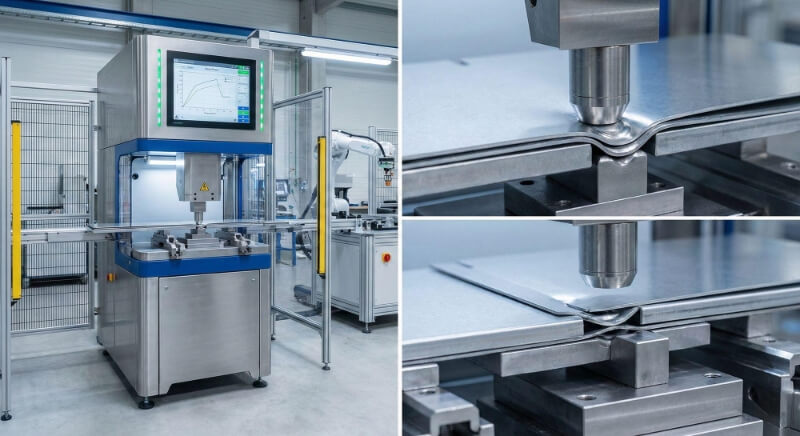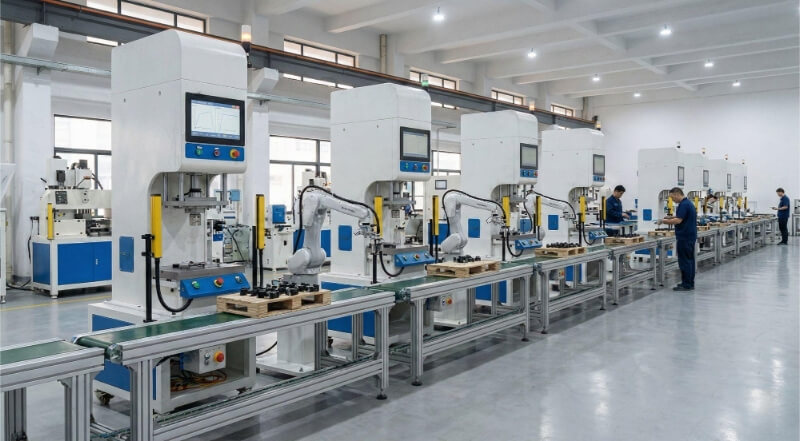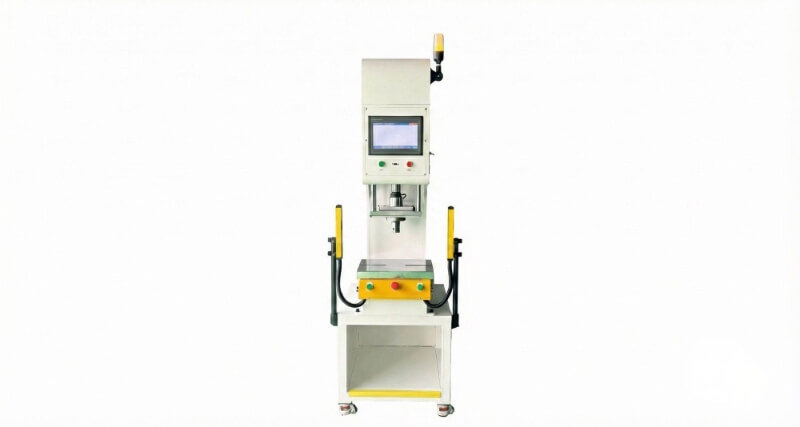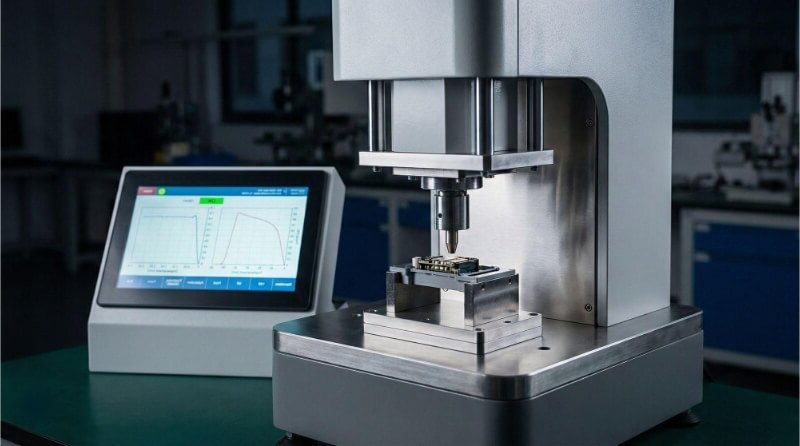Shengen is your partner in sheet metal fabrication. Welcome to our latest informative post, dear readers. We will explore a subject close to our hearts and the operations of Shengen: What is MIG Welding?
MIG Welding is the process of joining two metals using a solid wire electrode. The weld is protected from contamination by an electric arc and a shielding gas that is inert, usually argon, or a mix of argon, carbon dioxide, and oxygen.
Are you eager to know more? We’ll dive in deeper to uncover the complexities of MIG Welding.
Basics of MIG Welding
We must understand these fundamentals as we have expanded into the production and distribution of precision metal components for various industries.
Basic Definition and Terms
MIG Welding is the abbreviation for Metal Inert Gas Welding. It is a method of joining two metal objects using a solid-wire electrode. A semi-inert or inert gas stream protects the welding zone, ensuring it is contaminant-free. It’s a symphony, a dance, and a combination of technology and craftsmanship for those who work at Shengen.
Core Components & Equipment
Understanding the equipment used to perform MIG welding is essential for understanding the finer points of the process.
Welding Gun
The MIG Welding gun is like a magic wand. The gun houses the electrode wire, controls the shielding gases, and supplies the electrical energy needed to weld the wire. The weapon’s trigger controls wire feed, gas supply, and power. We ensure that our welding guns at Shengen are of the highest quality. This allows us to work with precision.
Electrode Wire Rolls
These spools are central to the MIG Welding Process. They feed the electrode wire through the gun. We source only the highest quality electrode wires to meet all metals’ welding requirements.
Shielding Gas Tanks
The shielding gas protects the electrode wire, while the electrode wire is the substance. The welding gun releases gas. This gas is stored under high pressure. It ensures a clean weld.
Shielding gas
You might be wondering why we stress the shielding gas. The shielding gas is used in MIG welding to prevent oxygen, water vapor, and other contaminants from entering the weld zone. It is essential to avoid oxidation, which can compromise the integrity of the weld. Shengen uses various gas mixtures. The mixture depends on the material being welded. This can include pure argon or a mix of argon with carbon dioxide.
The Science Behind MIG Welding
MIG Welding is a marvel of science.
Electricity and its role
MIG Welding, at its core, is an electric process. A current of electricity is passed through the wire electrode to create an arc. The heat from the arc melts the metal and allows the pieces to fuse. Our state-of-the-art equipment ensures a stable electric supply.
The Melting Point Dynamics
Different metals melt at different temperatures. Understanding these dynamics is essential to MIG welding. The melting point of the wire electrode should be near or slightly below that of the workpiece. This will ensure a strong and seamless weld. Shengen’s team, with their expertise, selects the best electrode wire for every project to ensure optimum melting dynamics.
Benefits of MIG Welding
MIG Welding is a cornerstone in our sheet metal fabrication operations. What makes it so unique? MIG Welding has many advantages.
Speed up and Efficiency
MIG Welding is known for its speed. Continuous wire feed eliminates the need to stop to change rods. This results in faster welding. We can meet our obligations with this efficiency, especially when timely delivery is essential. We are proud of our efficiency at Shengen. This ensures all United States or Australia clients get their products on time.
Material Versatility
Metals are diverse. They range from stainless steel and aluminum to other metals. MIG Welding embraces diversity. It can weld various metals, alloys, and materials with the correct electrode wire and shielding gases. We are very grateful for this versatility. MIG Welding is adaptable, whether for gold-plated components for Jack Garcia or specialized aerospace components.
Lower Skill Requirements
MIG Welding allows for more flexibility for beginners. The continuous feed of wire simplifies the process and reduces the learning curve. We don’t compromise on quality. It will enable newer members of the Shengen team to become more proficient faster. This fosters an environment that encourages growth and learning.
Reduced Splatter and Cleaner Welds
Aesthetic appeal goes hand in hand with structural integrity. MIG Welding produces cleaner welds and less splatter. Shielding gas keeps contaminants at bay and gives the weld an attractive appearance. This is a great advantage for clients who are concerned with aesthetics. Not only do our products perform well, but they also look flawless.
Adaptability in Automation and Robotics
Automation is a necessity in the age of Industry 4. MIG Welding is a perfect fit for this story. Its predictability and consistency make it a great candidate for robotic operations. We at Shengen harness this adaptability by integrating cutting-edge automation to achieve precision and consistency.
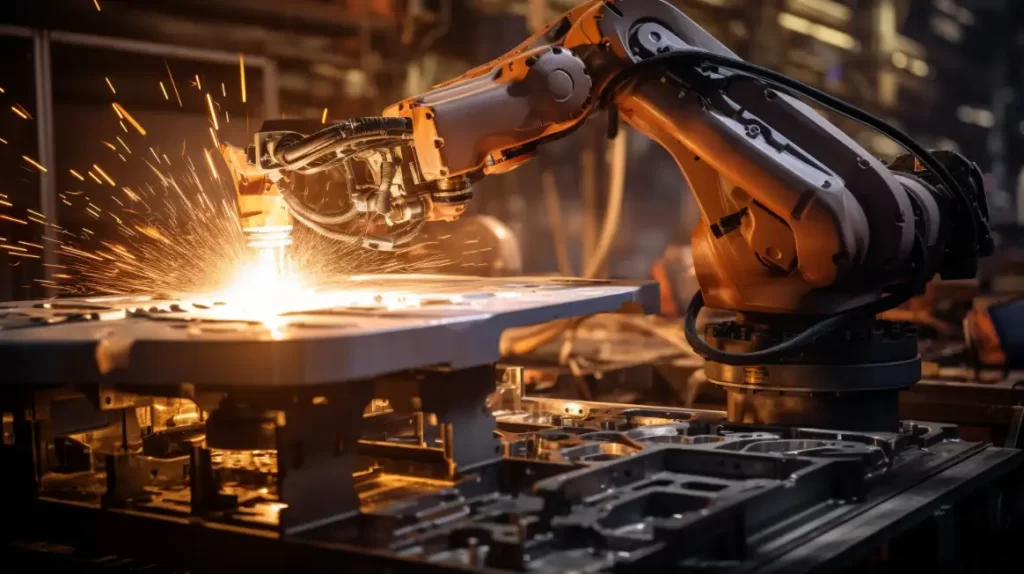
How to MIG weld
This guide was created passionately by Shengen, whether you are a new hobbyist or an experienced professional who wants to refresh your knowledge. We’ll take you on a step-by-step tour of MIG Welding.
Safety First
Safety is the priority. Wear protective clothing and gear such as a welding mask with the correct shade of lenses, gloves that are flame resistant, and a welding helmet. Make sure your work area is well-ventilated and free of flammable materials.
Preparing Your Welder
- Power Up: Connectto an electrical source. Verify that the voltage is the same as the welder’s specifications.
- Choose the Electrode Wire:Select the appropriate wire depending on your welding metal. For example, aluminum wire would be ideal if you’re welding aluminum.
- Install a Wire Spool:Open the side or the top of the welder. Position the wire spool and feed the wire through the feed mechanisms.
- Shielding Gaz: Connect the shielding gas tank. This is usually argon or a mix of CO2-argon. Make sure all connections are secure to avoid leaks.
Setting Your Welder
- Wire feed speed: Change the wire’s feed speed through the gun. The thickness of your metal and the type of wire will determine the rate at which the weapon provides the wire.
- Voltage control: Select the voltage. For thicker and thinner metals, you need a higher voltage.
Prepare the Metal
- Clean Metal: Use a wire brush or grinder to remove rust, paint, or contaminants.
- Clamp Workpieces: Use welding clamps to ensure your workpieces remain aligned and secure.
Welding Process
- Position & Hold the Gun: Aim at an angle of 15deg-20deg toward the direction you want to weld.
- Start the Arc: Press the trigger of the gun. The metal will be contacted by the wire, creating an arc. The metal melts, and weld beads form.
- Move Stable: Maintain constant speed and distance to the workpiece. Moving the gun with a slight weave motion is a good idea. This ensures an even distribution of the weld.
- Monitor Weld: Pay attention to the weld pool. Make sure it is narrow enough or narrow. Adjust your speed, and adjust your technique.
Post-Welding
- Let It Cool: Allow the welds to cool down naturally.
- Clean up the Weld: Remove spatter or slag from the weld using a chipping hammer or wire brush.
- Inspect the Weld: Check the Weld for any holes or weak spots. If needed, grind any high points down or redo any sections that may be weak.
Practice makes perfect
MIG Welding is a craft that improves over time. To improve your skills, start with scrap metal before moving on to larger projects.
Limitations and Challenges of MIG Welding
MIG Welding is no different. It has its challenges. We’ll explore these challenges not to discourage you but rather to better prepare us for our metal fabrication journey.
Equipment Cost
MIG Welding is not free. The initial investment for a high-quality MIG welder and its essential peripherals, such as shielding gas tanks, electrode wire spools, and other accessories, can be expensive. We at Shengen believe in investing the best, but this can be prohibitive for hobbyists or small-scale operators.
Sensitivity To Wind And Drafts
MIG Welding is sensitive to the environment, and especially wind. A draft can blow away the shielding gas, which protects the weld against contaminants. This compromises the quality of the weld. Outdoor MIG welding is only possible if you have protective measures like tents or windshields.
Imperfect Welds
MIG Welding, while relatively simple, has its challenges. There are issues like porosity (where gas is trapped in the weld) or lack of penetration (where the weld does not fuse properly with base metal). These issues can compromise structural integrity and the aesthetics of the welding.
Positional Welding Limitations
MIG is most commonly used to weld flat or horizontal surfaces. Vertical or overhead MIG welding can be tricky and requires more experience and skill to achieve a high-quality weld.
Equipment Maintenance
Well-maintained equipment is essential for achieving quality results. You must regularly maintain the welding gun, wire feeding system, and other components. The gun nozzle can become clogged with splatter, the liner may wear out, or the feed rollers could be dirty. All of these factors can affect performance. To keep your MIG welder running smoothly, you must perform regular cleanings, replace parts on time, and do periodic maintenance.

Safety Precautions for MIG Welding
Once again, greetings from Shengen. Safety is our number one priority. MIG Welding is no different from any other industrial process. Safety protocols are essential. It is vital to ensure the safety of the welder and the environment. We’ll shed some light on these safety measures deeply ingrained into our daily operations.
Proper Protective Gear
Safety begins with the welder. It is crucial to protect yourself from the risks associated with welding.
Eye Protection and Helmets
Exposure to a bright arc can cause flash burns or arc eye. The lenses of a good welding helmet will automatically darken to protect against ultraviolet and infrared radiation. The lenses will darken within a fraction of a second when they detect the welding arc. This protects the eyes.
Gloves, Clothing and
The welding process produces sparks and metal splatter. Flame-resistant leather gloves protect your hands. Sparks won’t stick to clothing if you wear long-sleeved clothes, pants with no cuffs, and high-top sneakers. A flame-resistant coverall or apron provides an extra layer of protection.
Workspace ventilation
Inhaling fumes or gases from welding processes can be dangerous. A sound ventilation system in the workplace will ensure these fumes disperse quickly. Use exhaust fans or hoods when welding in small spaces. For more demanding tasks, welders might need respirators to protect them from hazardous substances.
Equipment Safety
Mishandling of welding equipment can lead to electric shocks, burns, or even fire. Always:
- When not in use, turn off the equipment.
- Cool hot weldments or tools on a fire-proof, safe surface.
- Make sure that the welding cable is insulated and not damaged.
How to Prevent and Recognize Welding Fumes
When welded, different metals emit different fumes. For example, zinc fumes from galvanized steel can cause a fever of metal fumes if inhaled in large amounts. You must know what metals you are working with and the potential fumes they may emit. Wear a welding mask if needed, and ensure good ventilation.
Regular Equipment Inspections are Important
A well-maintained machine will be safe. Regularly inspect the following:
- Welding cable for wear and damage.
- Connectors for tightness, integrity, and strength.
- Gas hose shielding to prevent leaks.
- Check the overall condition of your welding machine. Listen for any strange sounds or behavior.
MIG vs. other welding techniques
People often ask us how MIG compares to other welding techniques. Understanding these differences is essential for Shengen because we deal with various materials and projects. Let’s look at these comparisons to see what makes each method unique.
TIG welding
TIG welding produces the weld using a non-consumable Tungsten electrode. Comparing MIG:
- Precision:TIG is a precision welding method that offers greater control and allows for finer, intricate welds.
- Materials:While MIG is versatile and can be used to weld non-ferrous materials like aluminum or magnesium, TIG excels.
- Skill level:TIG is a manual process requiring a higher skill level than MIG.
- Cleanliness:TIG produces welds that are cleaner and without spatter. However, it is slower than MIG.
Stick Welding
This process is also known as Shielded Metal Arc Welding or SMAW. It uses an electrode coated with flux to weld.
- Versatility:Stick welding can handle rusted or dirty materials, whereas MIG might have difficulties.
- Environment: Stick welding has a lower sensitivity to wind and drafts than MIG, which makes it a better choice for outdoor work.
- Skill level: Both require skills, but stick welding requires a steeper curve to achieve consistent quality.
- Speed:MIG is faster and more efficient when welding long lengths.
Flux Coated Arc Welding
This method is similar to MIG but uses a tubular wire filled with flux.
- Speed: Flux-cored welds are known for their speed, particularly when welding thicker materials.
- Environment: Flux-cored welding is more tolerant of windy conditions than MIG.
- Versatility:It is an excellent choice for thicker metals and is also suitable for welding out of position.
- Appearance:Flux-cored welds may not be as clean and tidy as MIG welds and often require post-weld cleaning.
The Key Factors to Consider When Selecting a Welding Technique
We consider several factors when deciding on the best welding technique for Shengen.
- Material Type: Certain methods are more suitable for specific materials.
- Location of Welding: The outdoor project might require techniques less sensitive to environmental conditions.
- Precision: TIG is best for fine, detailed work, while MIG is better for long, consistent welds.
- Cost-Efficiency: MIG offers an excellent balance between speed and cost-efficiency for many of our projects.
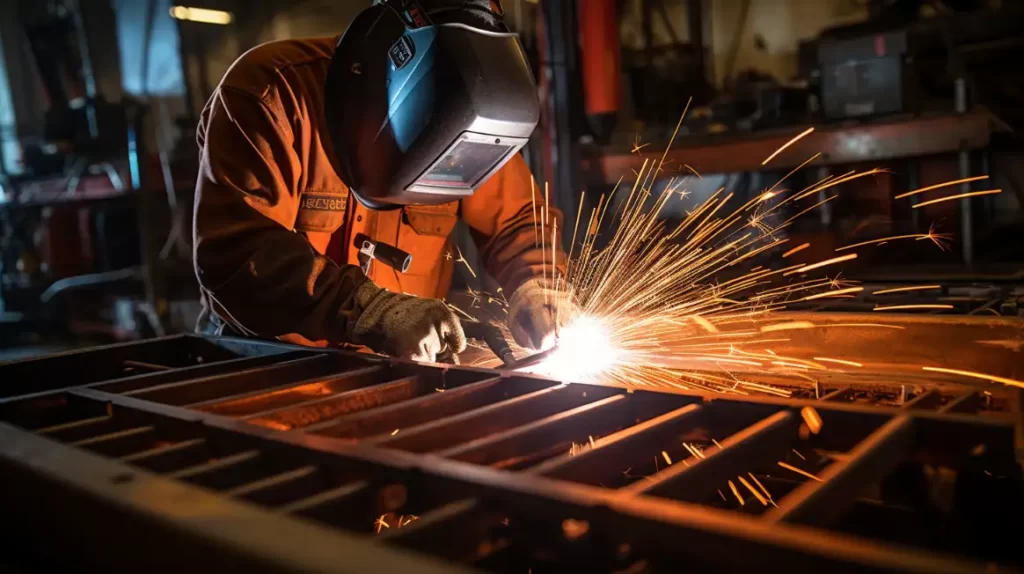
Practical applications and industries
We value MIG welding as a technique that is the cornerstone for many industries. Let’s explore the many applications and industries that depend on MIG.
Automotive and Transportation
MIG welding is a widespread technique in the automotive industry.
- Manufacturing: MIG welding is a fast and efficient method of mass production.
- Repair: Body shops prefer MIG because it works well with thin metals and ensures seamless repairs on vehicle bodies.
- Custom Built:MIG welding is an excellent tool for automotive enthusiasts customizing or building vehicles from the ground up.
Construction and Infrastructure
MIG is the answer to a robust infrastructure.
- Building Frameworks: MIG welding creates robust metal frames for commercial buildings and residential homes.
- Overpasses and Bridges: The durability and strength of MIG welding are vital to the longevity of overpasses and bridges.
- Heavy Machinery: The construction industry relies heavily on robust machinery, often assembled and repaired with MIG techniques.
Artistic and Decorative Creations
MIG welding is not just for the industrial world. It also has a place in the arts.
- Sculptures: Artists use MIG welding to join metals to create intricate sculptures that adorn public spaces.
- Decorative Item: MIG welding can create beautiful decor, from metal wall hangings and garden ornaments.
- Custom Furniture: Imagine metal chairs, tables, and ornamental pieces made with MIG precision.
For DIY Home Use and Hobbyists
MIG welding is popular among hobbyists because of its accessibility.
- Home repairs: MIG answers many home DIY projects, from fixing a broken barbecue to mending metal fencing.
- Crafts: Hobbyists create a variety of skills using MIG welding, including metal jewelry and small decorative items.
- Workshops:A MIG welder is a common feature in many hobby workshops, proving its ease of use.
Aerospace and Advanced Manufacturing
MIG welding is an excellent choice for industries that require precision and strength.
- Aircraft structures: The aerospace industry needs welds to withstand extreme temperatures, so MIG is the obvious choice.
- Spacecraft components: People use MIG welding to assemble everything from rockets to rovers in spacecraft.
- Advanced Machine: MIG’s accuracy in industries such as semiconductor manufacturing is essential.
Tips and Tricks for Beginners
MIG welding was no exception. This skill has endless possibilities, from personal projects to professional applications. It might seem overwhelming to embark on this journey, but the correct knowledge will make your path easier.
Selecting The Right Equipment
Your equipment is the partner you need on this journey. When making your choice, consider these factors:
- Understanding the purpose: Artistic endeavors may have different requirements than repairing home items.
- Power source: Make sure you have a power supply that meets the needs of your welder.
- Budget: Do not break the bank. It’s often wise to start with mid-range gear and upgrade as you improve your skills.
Practice on Scrap Materials
Before diving into the main projects:
- Trial runs: You can use scrap metal to test the weld process. This helps you to understand the beading, travel speed, and other aspects of welding.
- Experiment: Try welding at different angles and locations. They are understanding how various factors can affect the outcome.
- Feedback: Inspect your welds after welding. Use inconsistencies as learning opportunities.
Joining Welding Communities and Forums
When we learn together, we know better:
- Shared knowledge: Join online forums or welding communities in your area. These forums are a treasure trove of tips and experience.
- Peer review: Share and receive feedback on your initial project. Constructive criticism speeds up learning.
- Stay updated: The world of welding is constantly changing. You can stay up-to-date with the latest equipment and techniques by joining communities.
Understanding Welding distortions and how to minimize them
Even experienced welders encounter distortions. Here’s what you can do to fix them:
- Preparation: Align your workpieces and secure them properly. Before doing a complete weld, tack weld the pieces at various points to keep them in place.
- Technique: A series of short welds, as opposed to a long continuous one, can reduce heat and, consequently, distortion.
- Cooling: Let your welds cool down gradually. Rapid cooling can cause unwanted stresses and warping.
The importance of surface preparation and cleaning
Clean surfaces are the first step to a good weld.
- Remove Contaminants: Oil, dirt, and rust will adversely affect the weld quality. Clean surfaces will ensure a better weld and reduce imperfections.
- Grinding: Use a grinder wheel to remove paint and coatings. This will improve electrode contact.
- Consistency: Make cleaning and preparation part of your workflow to ensure consistent results.
Conclusion
MIG Welding has been a critical factor in enhancing our position within the sheet metal fabrication sector. This demonstrates our dedication to providing high-quality products and our passion for our work. We thank you for taking part in this informative journey into MIG Welding. We’re here at Shengen to help you with all your sheet metal fabrication requirements.
Do you need a reliable sheet metal parts manufacturer? Shengen is the place to go. We specialize in sheet metal laser cutting, bending, surface finish, and sheet metal welding. We place a high priority on establishing trust, maintaining standards of quality, providing competitive prices, and guaranteeing timely delivery. Reach out to Shengen Today and seek help from professionals!
FAQs:
Can MIG weld thin materials?
Absolutely! MIG can adapt to different material thicknesses. MIG welding excels when it comes to thin material due to its precision. Using the correct settings and techniques, you can weld thin sheets with strength and accuracy. This method is popular in automotive repair and other light sheet metal applications.
What is the effect of the shielding gas on the weld quality?
The quality of the shielding gas is crucial to the success of your welding:
- Shielding Gas: Shielding gases protect the weld pool against atmospheric contaminants such as oxygen and nitrogen, which can weaken or cause porosity.
- Stability: A high-quality and consistent gas will ensure a stable arc and a smoother weld.
- Gas composition: Mix (e.g., Argon-CO2) may affect the weld properties. Use the correct mix for your application.
Which metals cannot be MIG-welded?
MIG welding works on many metals, but some metals can be challenging.
- Cast Iron: You can MIG weld cast iron, but it’s not recommended. The metal’s brittleness might lead to cracks.
- Copper: Its high thermal conductivity makes it difficult to MIG weld. It requires special techniques and filler material.
- Titanium: This metal is reactive with atmospheric elements and requires specialized equipment.
Even for metals that can be MIG-welded, it is crucial to use the correct technique and preparation for a successful result.
How frequently should I replace consumable MIG components?
The durability of consumable MIG components, such as contact tips and liners, depends mainly on the material and intensity of use.
- Contact Tip: They wear out more quickly, especially when welding aluminum. Replace if you notice signs of wear or a drop in welding performance.
- Liners: Clean them regularly. Replace them when they show signs of wear or if the wire feeding is erratic.
To prevent unexpected downtime, always keep spare consumables on hand.
Can MIG welding be used outside?
MIG welding can be performed outdoors with caution.
- Wind Protection: Use windbreaks and screens to protect weld areas from drafts.
- Shielding gas: Increase flow rate to counter potential wind effects.
- Alternative: Flux-cored Arc Welding, a variation on MIG, works better in windy conditions.
More Resources:
Understanding Welding Distortions – Source: Lincolnelectric
MIG vs. TIG Welding – Source: Shengen
Green Welding Solutions – Source: GlobalSpec
Hey, I'm Kevin Lee

For the past 10 years, I’ve been immersed in various forms of sheet metal fabrication, sharing cool insights here from my experiences across diverse workshops.
Get in touch

Kevin Lee
I have over ten years of professional experience in sheet metal fabrication, specializing in laser cutting, bending, welding, and surface treatment techniques. As the Technical Director at Shengen, I am committed to solving complex manufacturing challenges and driving innovation and quality in each project.

